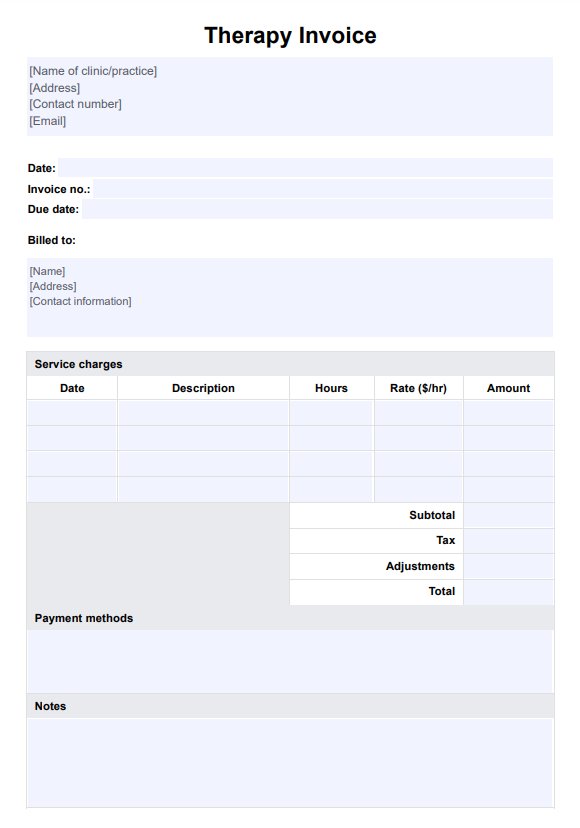A therapy invoice should include client details, service date, type of therapy, duration, noting the relevant codes when applicable (CPT codes optional), and payment terms, facilitating health insurance claims and online payments.

Therapy Invoice Template
Streamline billing processes and stay organized with our Therapy Invoice Template. Download now!
Use Template
Therapy Invoice Template Template
Commonly asked questions
Therapy invoices ensure prompt payment for services and serve as vital documentation for financial and insurance purposes, assisting mental health therapists in managing their billing process effectively.
Using Therapy Invoice Templates streamlines the billing process, allowing mental health therapists to send professional invoices promptly. These templates also ensure accuracy in record-keeping, simplifying the management of therapy services and payment terms.
EHR and practice management software
Get started for free
*No credit card required
Free
$0/usd
Unlimited clients
Telehealth
1GB of storage
Client portal text
Automated billing and online payments











